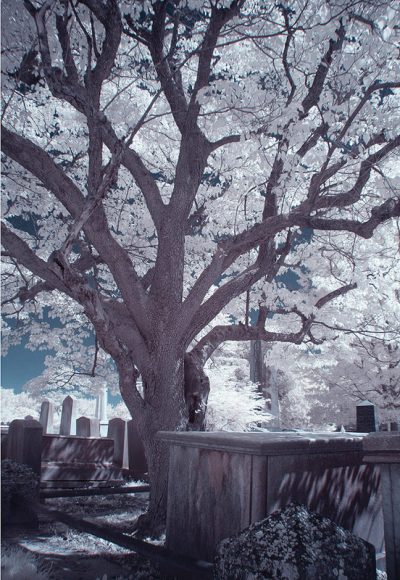
Douglas Sutphen was shocked. On a summer day in 1989, two athletic young men bought a burial plot for their parents in an unoccupied corner of the cemetery. Suddenly they offered him an additional $200,000 for the entire corner—a swath equivalent to about 70 plots. Sutphen, long-time manager of the Princeton Cemetery of Nassau Presbyterian Church, was not accustomed to being offered bribes by the community’s well-heeled citizens.
“Lyle and Erik Menendez were a bit arrogant,” Sutphen says of the Princeton-reared brothers, who were eventually convicted of murdering their parents, Jose and Kitty Menendez. “The church just didn’t sell large plots like that, so I really wasn’t going to take a bribe.”
The Menendez brothers are serving life sentences in California. Their parents rest peacefully under a black granite headstone in a standard-sized plot in Princeton Cemetery—likely the most celebrity-packed burial ground in New Jersey.
Near the entrance on Witherspoon Street lie the remains of Grover Cleveland (who in life largely eschewed his first name, Stephen), the only U.S. president born in New Jersey. Cleveland’s wife, Frances, is interred by his side, as is their daughter, Ruth. Born between Cleveland’s two non-consecutive stints in the White House, Ruth died at age 12 of diphtheria. Known as Baby Ruth, she was said by some to be the inspiration for the candy bar.
Novelist John O’Hara (Butterfield 8, Ten North Frederick) is buried here, as are the seminal pollster George Gallup and the famed bookseller Sylvia Beach, who defiantly published James Joyce’s Ulysses when others deemed it obscene. O’Hara’s grave—marked by a small but ornate tombstone—often gets a spray or two of green flowers on St. Patrick’s Day.
Most of the presidents of Princeton University are interred in the Presidents’ Plot. These include Jonathan Edwards, the noted theologian, his son-in-law Aaron Burr Sr. (whose monument is the cemetery’s oldest surviving one) and Burr’s son, future vice president Aaron Burr Jr.
One of the largest—and easily most imposing—of the monuments marks the gravesite of Paul Tulane, a 19th century Princeton native who made his fortune in the clothing and textile business in New Orleans. (Tulane is said to have packed suits so quickly that they gained creases in the pants legs—a fashion innovation that has lasted.) Tulane returned to Princeton to retire and offered what was then the College of New Jersey a piece of his fortune if it would take his name. The trustees disapproved—later naming the university after the town. Rebuffed, Tulane gave his money to the Medical College of Louisiana, which renamed itself Tulane University. The Tulane monument, a life-size statue of the man perched on a high pedestal, dominates the cemetery. It is considered no coincidence that Tulane’s statue has its back turned to the university that spurned his generosity.
Several famous Princetonians, including Albert Einstein are not buried here, but famed mathematicians Kurt Gödel (an innovator in logic) and John Von Neumann (developer of the mainframe computer and lead mathematician in the atom-bomb commission) are. A local signer of the Declaration of Independence, Richard Stockton Sr., rests at the nearby Quaker Meeting House Burial Ground in an unmarked grave; but his son, Richard Jr., a former U.S. senator, is here. Paul Robeson Jr., who grew up in town and became a world-renowned singer, actor and activist in the mid-20th century, is not here, but his parents, ministers William and Maria—two of the first African-Americans to achieve prominence in New Jersey—are.
Sutphen says that about 120 plots remain available, at $3,750 each. Some owners sold theirs back to the cemetery during the recent recession.
“We love visitors to see what a wonderful place this is,” Sutphen says. The cemetery is open from 9 am to 5 pm daily; admission is free.
